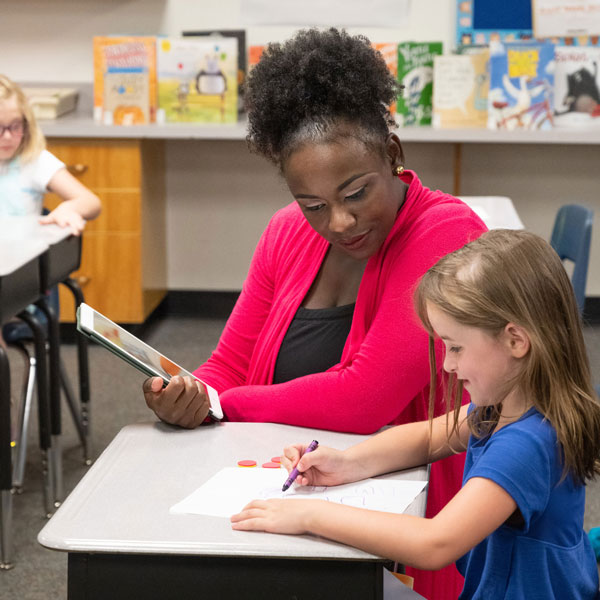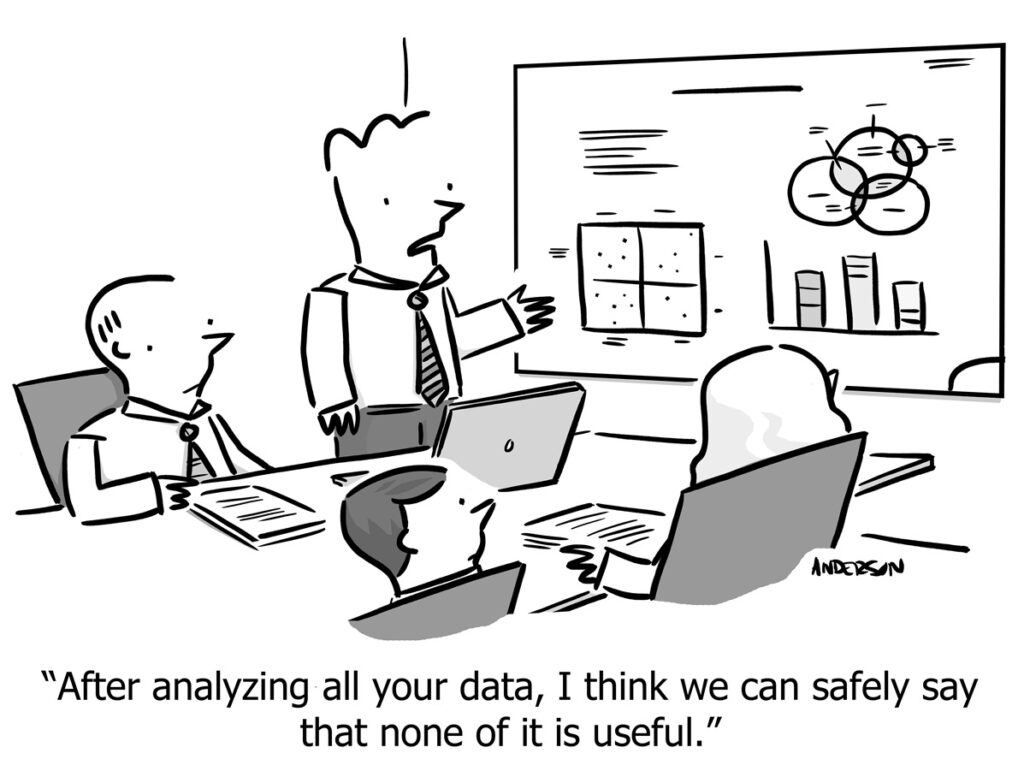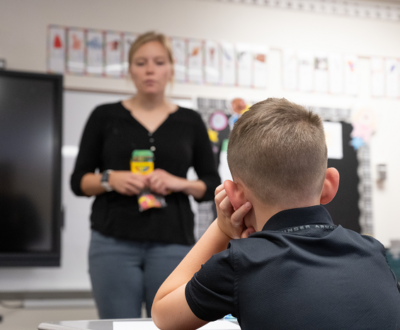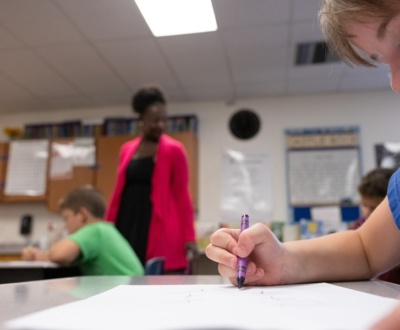More emphasis this year has been put on using the results from third-party benchmark, interim, and other assessment tools. These provide a high-level view of student learning, can help identify gaps in a curriculum, and can help predict and anticipate high stakes test results. But more than ever, teachers teaching through the pandemic have greatly suffered from missing information on what was once the daily practice of providing students with tasks, observing, listening, documenting, and analyzing student work. This practice of informal and formal classroom assessment contains the greatest, most valid data about student learning.
“This practice of informal and formal classroom assessment contains the most valid and meaningful data about student learning.”
In the article below, we outline how to create a rich resource of quality student learning data in your classroom and across schools. Then, we outline how this data can be collected in remote and hybrid learning environments this challenging school year.
What does quality student learning data look like?
Meaningful for Teachers and Aligned to Instruction
When thinking of student learning data, we may tend to think of expansive, high-stakes testing. But in fact, it is the small, everyday efforts to collect and understand student learning that provide the best quality information for teachers. This EdWeek article on Improving Instruction with Student Data is a great example as to how small, everyday efforts to observe, note, and provide opportunities for students to demonstrate understanding build a different conception of “student learning data”.
Teachers are the ones who need to be able to use data in order to improve instruction. Therefore, quality student learning data must be meaningful for teachers. To be meaningful for teachers, information needs to relate directly to classroom instruction. In this way, the data can be easily interpreted and instructional responses can be developed. District-wide assessment systems provide meaningful information for leadership and can help inform school improvement efforts and resource allocation, but if not directly aligned to curricular programs, these results cannot be translated into instructional responses.
Organized
Teachers across schools collect and analyze student work on informal and formal classroom assessments. In order for this information to be interpreted by the teacher and her/his colleagues, it needs to be recorded in a way that can be accessed and analyzed. In other words, a gradebook. Depending on the school or district, this could be as simple as formatted spreadsheets. Alternatively, information could feed into a data warehouse and display results through a data visualization software tool. If you are not familiar with our own solution to collect and analyze assessment results, explore a demo here. There are also formative assessment tools with their own data visualization and analytics features.
Accessible
What is important in this variety of solutions to the same problem — making classroom assessment results visible — is that results can be organized by assessment or by standard. This helps teachers understand student learning at a point in time and then how it evolves over time. In order for teachers to share results, the way that results are organized for one class need to be organized in the same manner for other classes. Consistency is key. Additionally, everyone who needs this information needs to be able to access it, either in the form of raw data (e.g. the original spreadsheets) or, preferably, data visualizations that aggregate and disaggregate results at the click of a cursor.
Timely
It is not a best practice for teachers to give students an assignment and then not grade or provide feedback until weeks later. Unfortunately, during the pandemic, this is the reality for many traditional pencil and paper assignments. Opportunities for students to demonstrate understanding are especially difficult in remote learning environments. These challenges are compounded for the earlier grades. Teachers have, correctly, scaled down assessment efforts. Additionally, many tasks can be:
- Included as questions for a one-on-one teacher/student meeting;
- Shared in take-home folders with guidelines for parents;
- Be uploaded or captured by video/photo and shared with teachers the day of completion; or
- Transformed into online tasks where results can be collected and analyzed in a timely manner.
In order for student learning data to be of quality, it needs to reflect recent information and assessment of a student’s understanding.
Detailed
Spreadsheets are often the go-to option to collect these data points. Nonetheless, they have many limitations: critically, they are not made for collecting a body of evidence. Teachers need samples of student work, images of student work, and a method of capturing observations of student learning in a systematic way. Collect pertinent samples of student work in a physical or online portfolio, record notes and observations, and keep this information organized by date and skill so that it can be quickly referenced and shared.
Reliable
Grading practices can vary widely from classroom to classroom. For this reason, the reliability of classroom assessment results across schools and districts have been a particular area of challenge for school and district leadership. Leadership can set protocols to improve the reliability of this data. They can provide well-defined scoring guides to promote consistency in grading practices classroom to classroom. They can also conduct professional learning to establish clear expectations around grading.
But this unusual year, due to well-meaning parents and the use of the internet to search for assessment responses, it has been especially hard this year to collect reliable student learning data. The “parent effect” and tasks that can be easily searched for online will inevitably impact the reliability of data that you collect this year, although there are ways that teachers can mitigate it as detailed in the section below.
How can teachers collect quality student learning data?
Now that we are clear about what quality student learning data is, how can teachers collect it? Especially during this year with remote learning environments and constantly changing learning environments? Our tips below are specific to this school year:
Focus on the Essential
This year the quantity of the data that can be collected through informal and formal assessments will be reduced. Do not replicate the entire scope and sequence of an instructional program as in previous years. Instead, focus efforts to gather information on essential standards and skills. Teachers can also reduce assessment length to focus on essential standards and/or break an individual assessment into two administrations to make it easier to collect results in a quick and timely way.
Share Expectations Around Task Completion with Parents
Help parents understand that any well-intentioned assistance can impede a teacher’s ability to understand and appropriately support student learning. Share expectations around task completion for tasks that will be used to assess student learning. Let parents know which tasks will help students practice skills and which will help assess a student’s skills. Clearly share how important it is to let their child complete these latter tasks independently if a teacher is to assess a child’s understanding. Share feedback with students and parents on these tasks. By focusing on feedback rather than just grades, you will help students and parents alike focus on the process of learning rather than “getting it right”.
Adapt Tasks 1: Conduct Interviews
If teaching in a primarily remote environment, successful teachers are scheduling one-on-one meetings with students. Use these opportunities to collect information about student learning. Especially for younger grades, many tasks can be conducted as an interview-based assessment. Note and collect results during these virtual meetings.
Adapt Tasks 2: Digital Tools to Collect Assignments
Young and older students alike can share work samples and other assignments. They can upload work samples, videos, or images to online portfolios and other distance learning tools. There are tools such as Flipgrid, Seesaw, Nearpod, Google Classroom, and SchoolStatus among others. These can improve the ability to distribute and collect assignments in a variety of formats. Likely you are already using these tools.
Share a print calendar of assignments with parents so that they can help support their students to complete important tasks, since sometimes these can be lost. Include assignments that can be used as informal or formal assessments of student learning. Make sure that students and parents know that these assessment tasks are especially important to complete and share with teachers.
Adapt Tasks 3: Digital Formative Assessment Tools
The go-to in remote environments, online assessments, may seem like the best option to adapt tasks to virtual environments. But note that not all tasks can be adapted to a digital format. You will continue to need to see student thinking or hear student thinking. Continue to conduct tasks that provide students opportunities to demonstrate their thinking and share their work such as the tools listed above. Use one-on-one interviews or set up drop-off times for students to share completed written work at regular intervals. Digital formative assessment tools should only be reserved for tasks where students need to demonstrate computational fluency, fact retrieval, or other tasks where the end answer is more important than process. These last results are inherently the least reliable due to the difficulty of controlling for help from parents or searching for responses online.
Conclusion
Teachers can continue to gather quality student learning data through the pandemic. Focus on essential skills; scale back formal classroom assessments; adapt tasks for interviews or work samples shared through distance learning tools; and make sure that the ease of digital formative assessment tools are only used for tasks where it is not important to the teacher to understand and document student thinking.
No one wants to go through the difficult process of conducting assessments in remote and hybrid environments only to find that that data is not actually useful to teachers. Focus this year on gathering quality data. Reduce the quantity of the data. The scope will be more focused than in years past. But these efforts to focus on quality data will give teachers the best information to support student learning.
About us and this blog
Our team and tools help schools implement standards-based grading, streamline assessment systems, and use meaningful data to drive decision-making.











